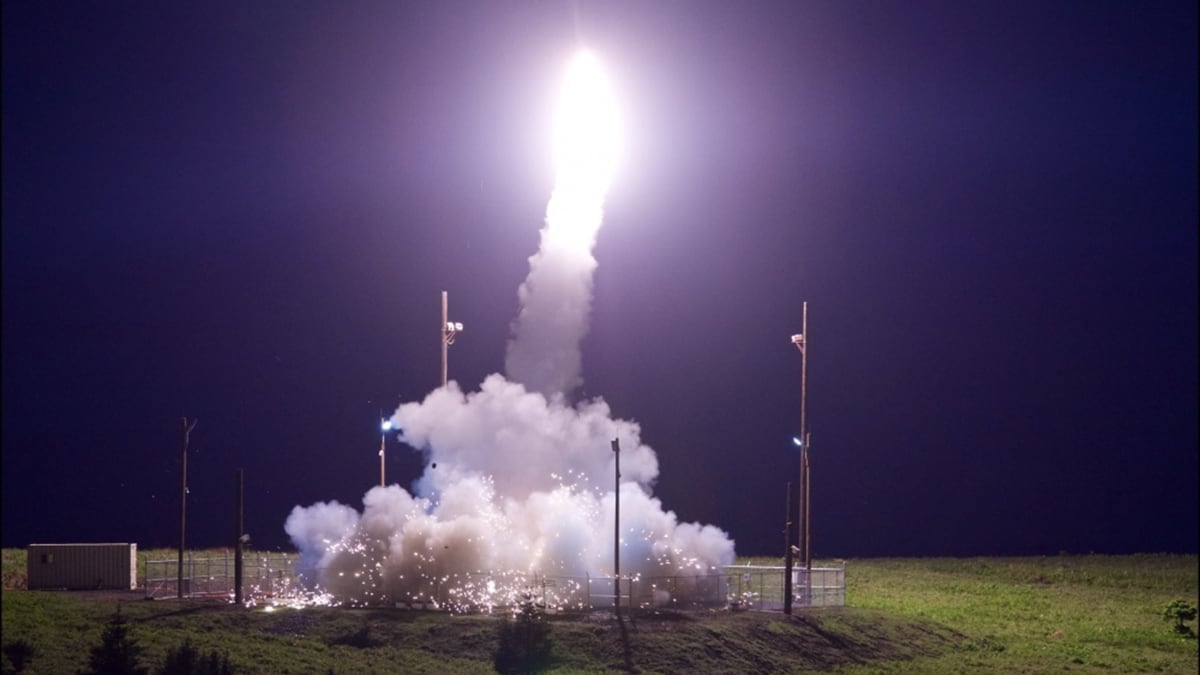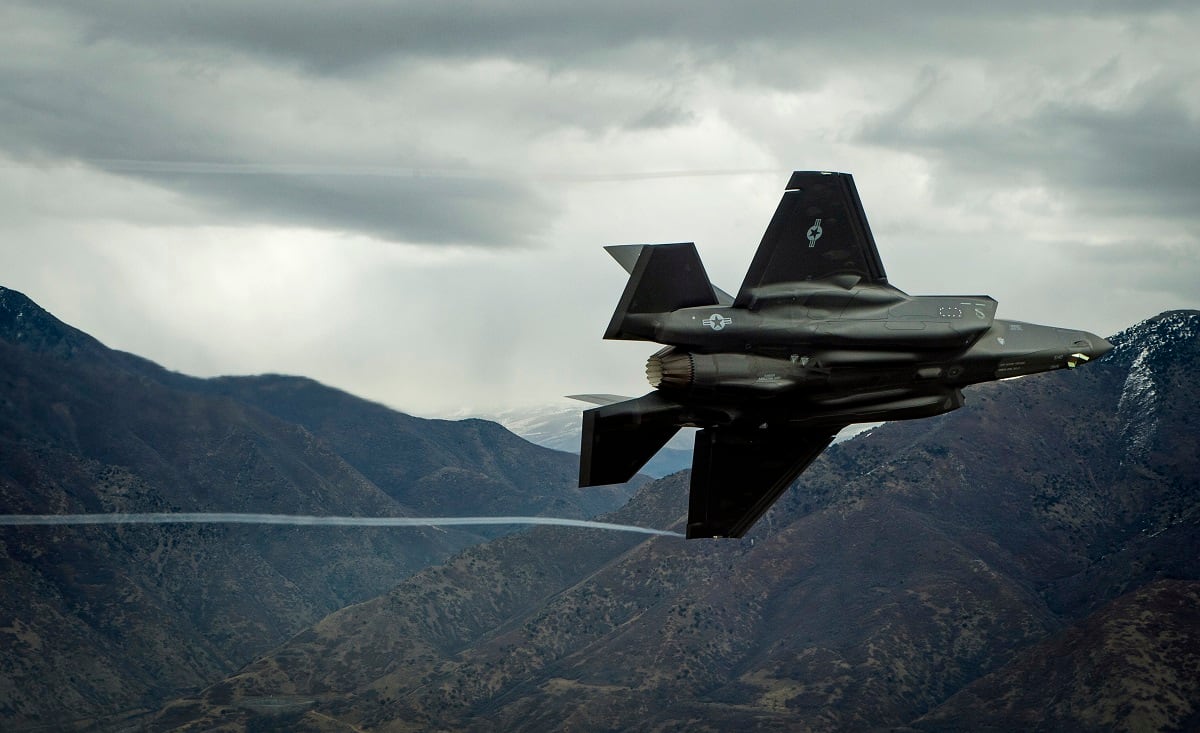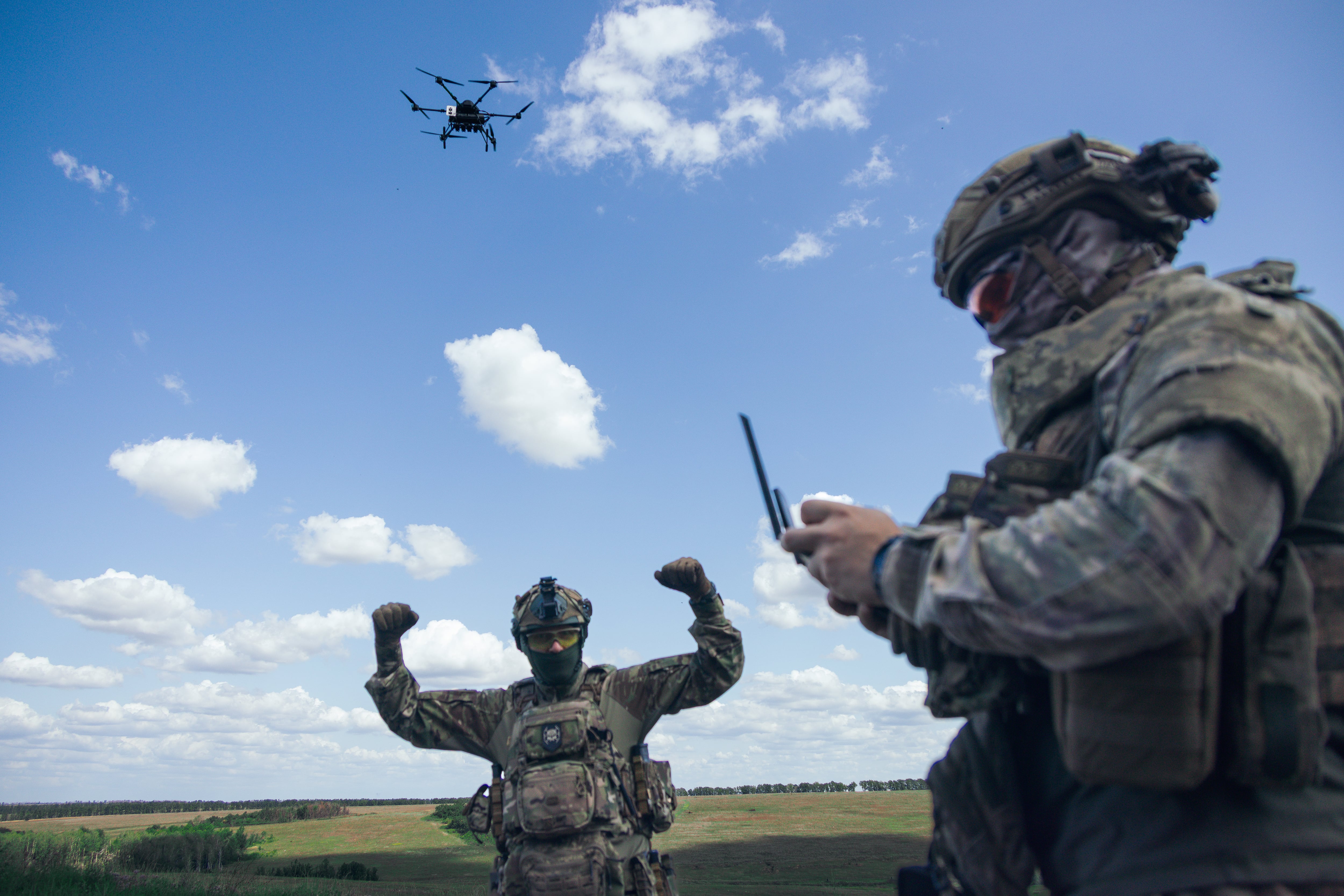WASHINGTON — Over the next six months, the Defense Department will weigh whether to develop a new weapon for the F-35 fighter jet that will enable it to strike down an intercontinental ballistic missile in the early stages of flight.
And it’s the Pentagon’s lead official for developmental technologies who is bullish on the prospect, telling reporters Jan. 17 that a new weapon could be both operationally effective and low cost.
"For certain regional geographies — North Korea comes to mind — we actually think it’s entirely possible and cost-effective to deploy what I will loosely call air-to-air interceptors, although possibly of new design, on advanced aircraft [and] using the aircraft as either sensor or weapons platforms to affect a missile intercept,” said Mike Griffin, undersecretary of defense for research and engineering.
"We will, as the report implies, be studying that again, but I've seen recently any number of assessments, several assessments, which indicate that this is something we should be looking at."
RELATED

The Trump administration’s Missile Defense Review, released Thursday after months of anticipation, carves out an enticing new potential role for the F-35 Joint Strike Fighter.
The jet “has a capable sensor system that can detect the infrared signature of a boosting missile and its computers can identify the threatening missile’s location,” the review states. “It can track and destroy adversary cruise missiles today, and, in the future, can be equipped with a new or modified interceptor capable of shooting down adversary ballistic missiles in their boost phase and could be surged rapidly to hot spots to strengthen U.S. active defense capabilities and attack operations.”
The report gives the Air Force and Missile Defense Agency six months to deliver a report on how best to integrate the F-35 into the larger missile defense architecture.
But with the armed services struggling to figure out how they can afford ramping up procurement as well as operating and sustaining the jets, it remains to be seen whether the Defense Department can afford having the F-35 as an ICBM killer.
RELATED

While the review states that both new and modified interceptors will be evaluated as part of the study, Griffin said that a modified version of the AMRAAM — the Raytheon-made air-to-air missile that can be carried by the F-35 inside its weapons bay — probably won’t be able to do the job, necessitating the creation of a new interceptor.
Even if the Pentagon decides to forgo investment in an ICBM-killing weapon for the F-35, it may be able to leverage the fighter jet’s extensive sensor suite, added MDA head Lt. Gen. Samuel Greaves.
“We have plans to integrate the F-35 into our missile tests, to assess that capability as part of the overall ballistic missile defense system or missile defense system,” he said.
Not all in the defense community are enthused by the prospect of involving the F-35 in missile defense.
When news broke Wednesday evening that the Pentagon will consider a role for the F-35 in intercepting ICBMs, some analysts in the arms control community balked. The broad consensus among those experts is that — although intercepting an ICBM with the Joint Strike Fighter could be technically feasible — it would be a poor use of the technology.
Throughout the Missile Defense Review, the Pentagon shows interest in developing boost-phase missile defenses, said Kingston Reif of the Arms Control Association. However, he pointed to a 2012 report by the National Academy of Sciences that said such technologies are not practical or feasible.
“Long-standing challenges to effective boost-phase defense include the short time ICBMs are in powered flight, the need for the defense platform to be located very near launch sites, and the availability of faster-burning solid-fueled missiles as a countermeasure,” Reif said.
In short, F-35s, equipped with a new interceptor, would have to be located very close to missile launch sites to be within range of an intercept during the boost phase, and “it would be very expensive to keep the planes on extended patrol and take them away from other missions,” he said. “A drone would be a better option than the F-35. And even then there would still be big challenges as the 2012 National Academies report noted.”
Jeffrey Lewis, director of the East Asia Nonproliferation Program at the James Martin Center for Nonproliferation Studies, tweeted similar concerns about using air-based intercepts:
Griffin did not elaborate on why he believed an interceptor capability for the F-35 could be delivered at low cost, nor what assessments he was basing his statements on.
But defense watchers have long speculated on whether the Pentagon would eventually pursue some kind of a role for the F-35 within the ballistic missile defense enterprise.
Republican Rep. Duncan Hunter, citing research he apparently saw from Los Alamos National Laboratories, said the F-35 could use an AMRAAM to take down an ICBM in the boost phase, reported Inside Defense in November 2017.
A December 2017 report from Defense One detailed a 2014 experiment conducted by the Missile Defense Agency and Northrop Grumman, which posited whether an F-35 could use its distributed aperture system to monitor and track ICBMs.
At least two F-35s would be needed in range to converge on the exact location of the target, Northrop officials told the news organization.
From there, the F-35s would be able to “[take] data from the sensors, [run] it through algorithms developed by Northrop and MDA’s Enterprise Sensor Lab, [generate] a 3D-moving picture of the missile’s trajectory, and [convey] it over the Link 16 tactical data exchange,” Defense One reported.
With that capability, it’s possible the F-35 could be used to collect intelligence about an enemy’s ICBM movements and transmit targeting data to other U.S. systems used to intercept the missiles, such as ballistic missile destroyers or missile defense systems like the Terminal High Altitude Area Defense or Patriot systems.
Valerie Insinna is Defense News' air warfare reporter. She previously worked the Navy/congressional beats for Defense Daily, which followed almost three years as a staff writer for National Defense Magazine. Prior to that, she worked as an editorial assistant for the Tokyo Shimbun’s Washington bureau.





